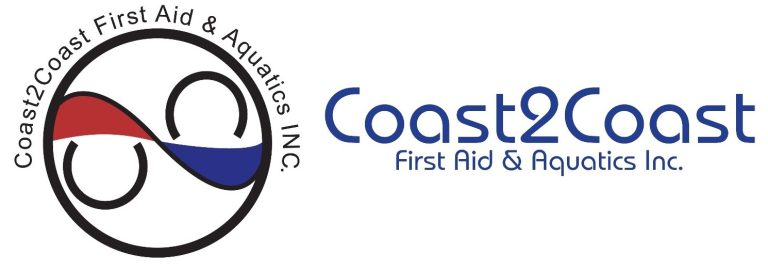Many parents and caregivers may wonder about the use of an Automated External Defibrillator (AED) in emergencies involving infants. While AEDs are commonly associated with adults experiencing sudden cardiac arrest, the question arises: Can you use an AED on an infant? In this blog post, we’ll explore the role of AEDs, the circumstances under which they should be used, why infants may experience cardiac arrest, how to use an AED on an infant, and whether infant CPR differs from adult CPR.
What is an AED?
 AEDs are devices that deliver an electric shock to the heart when someone experiences a sudden cardiac arrest to restore the heart to a normal condition. These devices are equipped with sensors and computer algorithms that analyze heartbeats and decide if a shock is required to normalize the heartbeat. AEDs are installed in public places such as airports, shopping malls, and schools and are essential in increasing the chances of survival for individuals experiencing sudden cardiac arrest.
AEDs are devices that deliver an electric shock to the heart when someone experiences a sudden cardiac arrest to restore the heart to a normal condition. These devices are equipped with sensors and computer algorithms that analyze heartbeats and decide if a shock is required to normalize the heartbeat. AEDs are installed in public places such as airports, shopping malls, and schools and are essential in increasing the chances of survival for individuals experiencing sudden cardiac arrest. When You Should Use an AED
 Sudden cardiac arrest can occur unexpectedly and affects people of all ages, including infants. Prompt use of an AED, in addition to CPR, is essential in such situations, as it can significantly increase the chances of survival. Cardiac arrest happens when the electrical system of the heart stops functioning and pumping blood normally. This means that they are unresponsive and not breathing. Without immediate intervention, cardiac arrest can be fatal within minutes. Research indicates that the use of an AED within the first few minutes of cardiac arrest can improve survival rates by up to 70%.
Sudden cardiac arrest can occur unexpectedly and affects people of all ages, including infants. Prompt use of an AED, in addition to CPR, is essential in such situations, as it can significantly increase the chances of survival. Cardiac arrest happens when the electrical system of the heart stops functioning and pumping blood normally. This means that they are unresponsive and not breathing. Without immediate intervention, cardiac arrest can be fatal within minutes. Research indicates that the use of an AED within the first few minutes of cardiac arrest can improve survival rates by up to 70%. What First Aid Training Course Do Teachers Need?
When it comes to first aid training for teachers, including Early Childhood Educators (ECE), Standard First Aid & CPR/AED Level C certification is a mandatory requirement. It is a WSIB-approved course in Ontario and OHS-approved in Alberta. This course covers all the essential First Aid and CPR topics like controlling life-threatening bleeding, care for poisoning, choking, etc. to name a few.
Be Prepared—Shop AEDs Today!
Equip your home or workplace with a life-saving AED from our store. Our high-quality automated external defibrillators are easy to use and essential for responding to cardiac emergencies.
Why do Infants Experience Cardiac Arrest?
 Although cardiac arrest in infants is relatively rare compared to adults, it can occur due to various factors. Congenital heart defects, respiratory infections, choking, and trauma are among the potential causes of cardiac arrest in infants. In some cases, sudden infant death syndrome (SIDS) may also lead to cardiac arrest. While the incidence of cardiac arrest in infants is lower than in adults, the importance of prompt intervention remains crucial in saving lives.
Although cardiac arrest in infants is relatively rare compared to adults, it can occur due to various factors. Congenital heart defects, respiratory infections, choking, and trauma are among the potential causes of cardiac arrest in infants. In some cases, sudden infant death syndrome (SIDS) may also lead to cardiac arrest. While the incidence of cardiac arrest in infants is lower than in adults, the importance of prompt intervention remains crucial in saving lives. How to Use an AED on an Infant
Using an AED on an infant requires careful attention and understanding of the device’s operation. While guidelines may vary slightly depending on the manufacturer, the basic steps typically involve:
- Turn on the AED and follow the voice prompts or visual instructions provided by the device.
- Apply one of the electrode pads in the middle of the infant’s bare chest and the second one in the middle of their back, as illustrated on the pads or in the accompanying instructions.
- Allow the AED to analyze the infant’s heart rhythm. If the AED advises to deliver a shock, it should be ensured that the infant’s body is not in contact with anyone else and then deliver the shock as instructed by the device.
- Immediately resume CPR following the AED’s prompts, if necessary, until emergency medical help arrives.
It’s crucial to remember that using an AED on an infant requires specific considerations due to their smaller size and unique physiology. Therefore, familiarizing oneself with infant CPR techniques and AED operations beforehand can greatly enhance readiness and effectiveness in an emergency.
Is Infant CPR Different from Adult CPR?
 Yes, infant CPR differs from adult CPR in several key aspects. While the basic principles remain the same – chest compressions and rescue breaths – there are notable differences in technique and approach. For instance, chest compressions for infants are performed using two fingers instead of the hands, and the compression depth and rate are adjusted accordingly. According to the Canadian Red Cross Comprehensive guide, the compression depth for infants is At least 1/3 of the chest’s depth and the compression rate is 100–120 per minute with 30 compressions in about 15–18 Seconds. For adults, the compression depth is at least 5 cm (about 2 in.) and the rate of compression is the same. Additionally, rescue breaths for infants involve covering both the nose and mouth instead of just the mouth for adults. These differences highlight the importance of proper training and preparation for responding to cardiac emergencies involving infants.
Yes, infant CPR differs from adult CPR in several key aspects. While the basic principles remain the same – chest compressions and rescue breaths – there are notable differences in technique and approach. For instance, chest compressions for infants are performed using two fingers instead of the hands, and the compression depth and rate are adjusted accordingly. According to the Canadian Red Cross Comprehensive guide, the compression depth for infants is At least 1/3 of the chest’s depth and the compression rate is 100–120 per minute with 30 compressions in about 15–18 Seconds. For adults, the compression depth is at least 5 cm (about 2 in.) and the rate of compression is the same. Additionally, rescue breaths for infants involve covering both the nose and mouth instead of just the mouth for adults. These differences highlight the importance of proper training and preparation for responding to cardiac emergencies involving infants. AED Usage on an Infant: The Conclusion
In conclusion, while the use of an AED on infants may raise questions and concerns, it can indeed be a life-saving intervention in cases of sudden cardiac arrest. Understanding when and how to use an AED on an infant and proper training in infant CPR techniques is essential for caregivers and bystanders alike. By being prepared and equipped with the necessary knowledge and skills, we can contribute to better outcomes in emergencies involving infants. Enroll in a CPR and AED course with Coast2Coast today and learn all you need to know to make informed decisions in crucial situations like these.



















